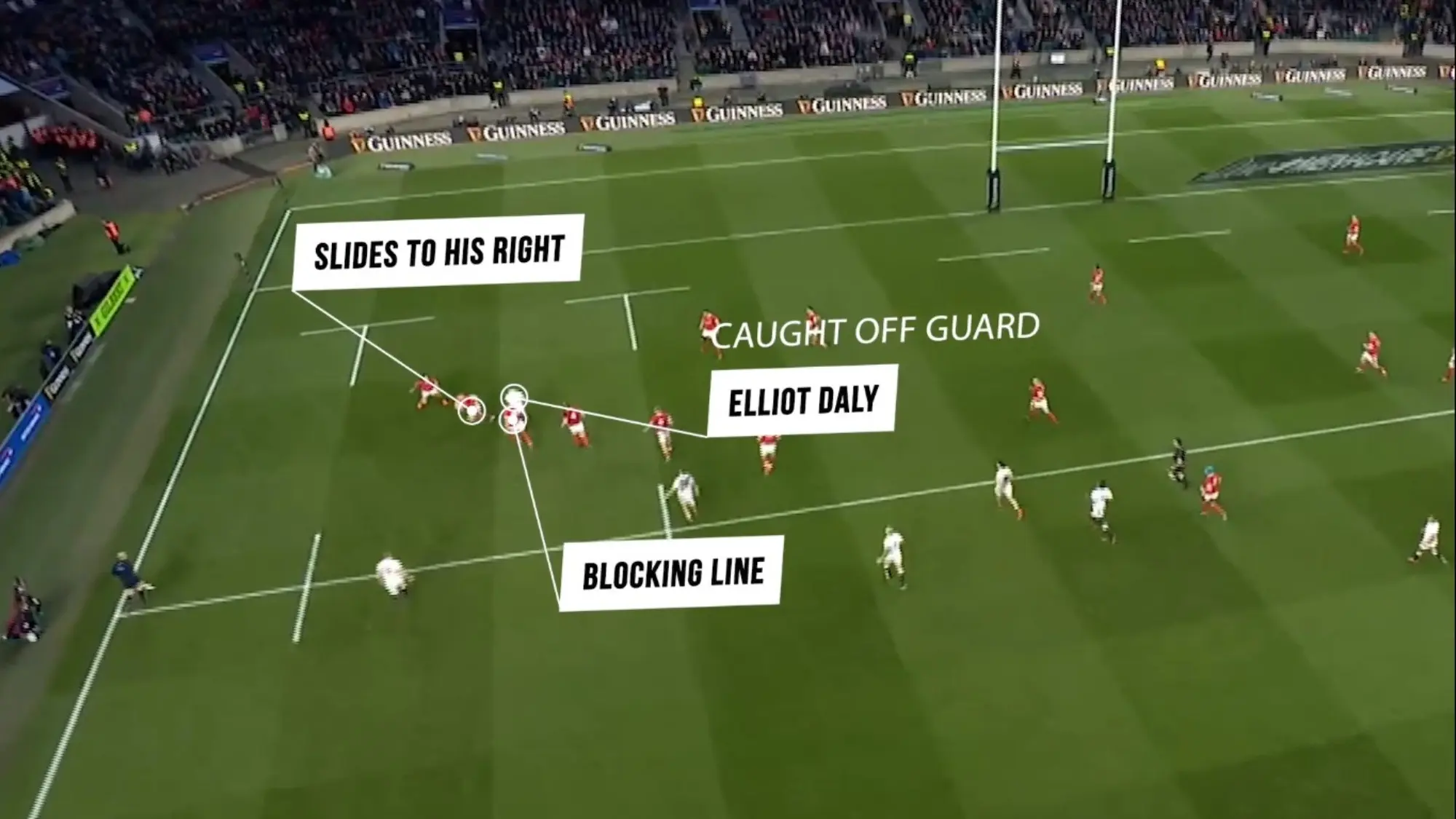On 7 March 2020, Justin Tipuric scored one of the finest tries in the history of the Championship.
We’re going to break down the try and look at the outstanding skill that saw Tipuric finish a dazzling 85-metre sequence. But firstly, we’re going to uncover how some cunning half-time analysis made the try possible.
It all starts with the restart…
In the modern game restarts are highly ordered pieces of play, much like a lineout or a scrum, with each individual having a specific role.
In the first half Wales received two kick-offs and both times England used the same strategy. George Ford kicked to the left side of the field aiming to drop the ball just outside the 22, roughly 15 metres from touch.
Doing this gives Elliott Daly enough time to use his outstanding pace and aerial ability to contest for possession in the air, something that he came very close to achieving.
The second reason was England’s belief that Wales would kick the ball back down the touchline into England’s half if they retained the ball, something that they would have identified from pre-match analysis.
Sure enough, both first half kick-offs saw possession returned to England via kicks from Tomos Williams and Leigh Halfpenny.
Now, this is where the really important bit comes!
Because England prepared for a kick return from Wales, only George Kruis was sent alone in the 15m channel as a back-up for the chaser Daly, and they kept Ford, Ben Youngs, Henry Slade and Manu Tuilagi in the backfield. Knowing that it was England’s turn to restart after the half-time break, Wales hatched a plan.
The sequence again starts with Ford restarting to the left-hand side, just as predicted.
Tompkins is again placed to receive the kick and executes the difficult skill of sliding to his right in the act of catching the ball, which combined with a neat blocking line from Jake Ball, catches Daly off guard.
This presents Wales with the opportunity they had hoped for: a 2 v 1 against Kruis. Tompkins attacks Kruis’s inside shoulder while also using short, fast steps, which commits Kruis to the tackle and enables Tompkins to release Josh Navidi down the touchline.
Importantly, Navidi carries the ball in both hands and while running at top speed, cuts in field. He uses small ball movements and head turns to attract both Ben Youngs and Slade before giving a lovely inside pass back to Tompkins, who has worked hard to stay involved in the play.
This pursuit of a second touch is something that coaches love to see from their players.
Tompkins caps off his contribution by carrying the ball right into Tuilagi’s “tackle zone”, accepting the inevitable hit while feeding the ball inside to Tomos Williams. The pass itself isn’t perfect but I love how Williams catches the ball with one hand without breaking stride and then hares deep into England’s half.
Now with only Ford to beat Williams keeps his hips facing forwards, which paints the picture that he might go himself, and uses a series of small dummy passes in the direction of Tipuric to “fix” Ford before giving a wonderfully timed pass.
Knowing the plan, Tipuric tracked the play from the moment Tompkins received the kick-off, timing his run to perfection before then using his excellent pace to score under the posts.
It’s a move that will live long in the memory of rugby fans and a perfect example of how there is additional beauty to be found if you know where to look!



